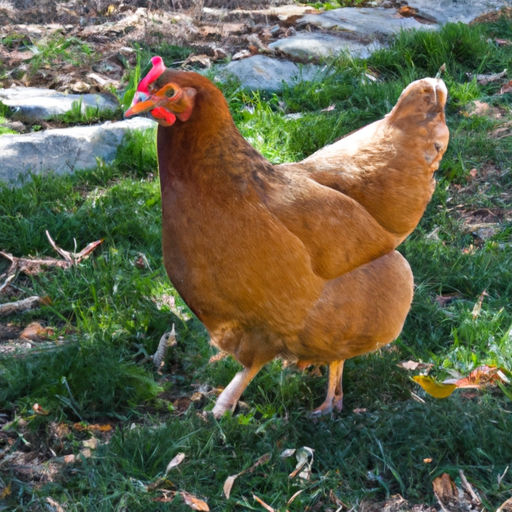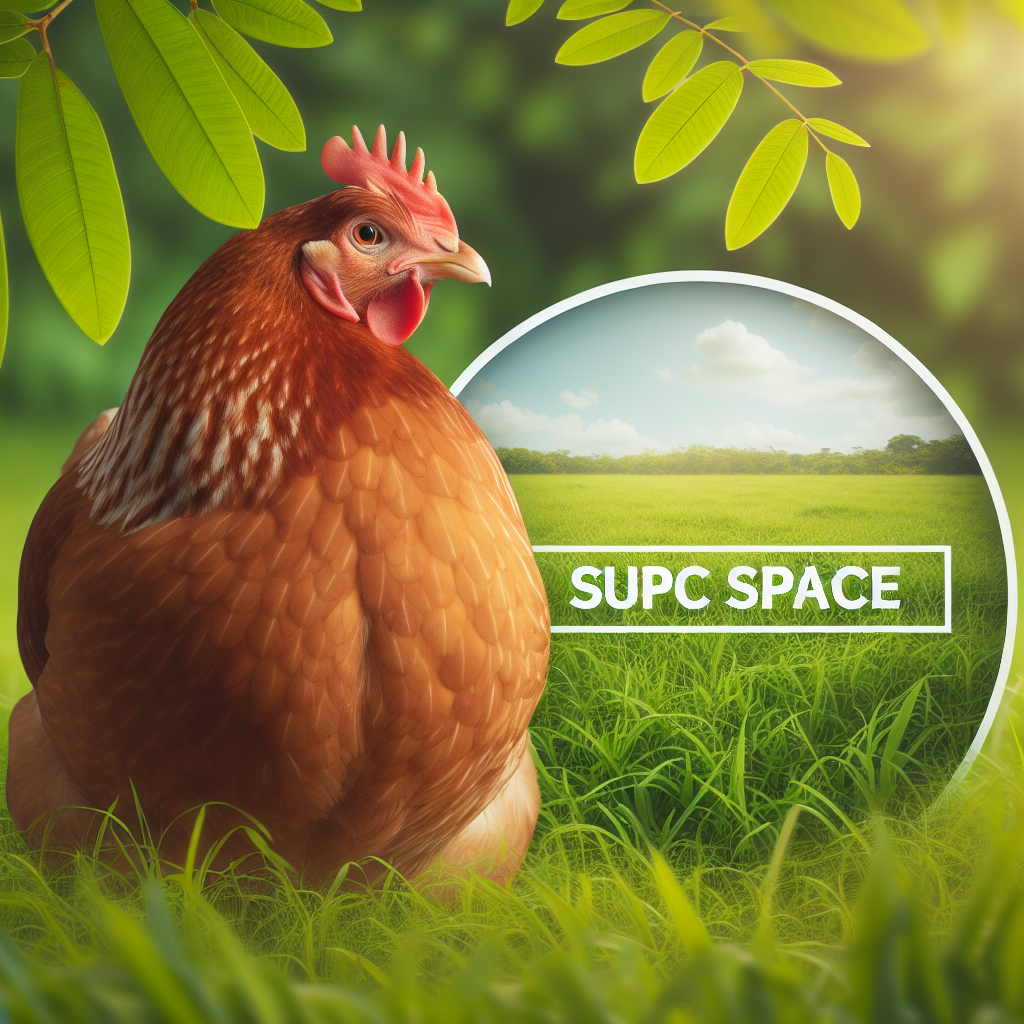Imagine a world where chickens strut happily in spacious and comfortable surroundings, where their well-being is of utmost importance. Have you ever wondered just how much space these beloved birds require to live their best lives? In this article, we will explore the optimal space needed for chickens to thrive and enjoy a sense of freedom and contentment. With a focus on their well-being, we will uncover the secrets to creating an ideal living environment for our feathered friends.
General Space Requirements
Overview
When it comes to raising chickens, providing adequate space is crucial for their overall well-being and welfare. The amount of space needed varies depending on factors such as the type of system (outdoor or indoor), the purpose of the operation (commercial or small-scale backyard flocks), and the specific needs of different chicken breeds.
Factors to Consider
When determining the space requirements for chickens, it is important to consider several factors. Firstly, the type of system being used is a significant consideration. Outdoor systems, such as free-range, pasture-based, and mobile coops, allow chickens to roam and forage, requiring more space than indoor systems. Secondly, the purpose of the operation also plays a role in determining space requirements. Commercial operations, particularly those for broilers and layers, may have different space requirements compared to small-scale backyard flocks. Lastly, the specific behavior and health implications of inadequate space must be taken into account to ensure optimal well-being for the chickens.
Space Considerations for Outdoor Systems
Free Range
Free-range systems allow chickens to have access to outdoor areas, providing them opportunities for natural behaviors such as foraging, dust bathing, and socializing. For optimal well-being, it is recommended to provide a minimum of 250 square feet of outdoor space per chicken. This space allowance ensures that the chickens have enough room to move around, explore, and engage in natural behaviors.
Pasture-based Systems
Pasture-based systems are similar to free-range systems but with designated grazing areas or pasture shelves. These systems require a larger outdoor space allocation due to the rotational grazing nature of the operation. Approximately 1,000 square feet per chicken is recommended for pasture-based systems to ensure sufficient grazing area and minimize overgrazing.
Mobile Coops
Mobile coops, also known as chicken tractors or chicken caravans, are movable structures that allow chickens to have access to fresh grazing areas while having some protection from predators. The recommended space requirement for mobile coops is approximately 50 square feet per chicken. This allocation provides enough space for the chickens to move freely within the coop while still offering them a fresh outdoor environment.
Space Considerations for Indoor Systems
Cage Systems
Cage systems are commonly used in commercial operations for egg-laying hens. However, they have drawn criticism due to the limited space they offer for chickens to move and exhibit natural behaviors. To ensure optimal well-being, it is recommended to provide each chicken in a cage system with a minimum of 67 square inches of space (approximately 0.5 square feet). Despite this space allowance, there is a growing movement towards cage-free systems that provide more room for the chickens to move and express natural behaviors.
Colony Systems
Colony systems, also known as furnished or enriched colonies, are an alternative to conventional cage systems. These systems provide more space for the chickens to move, perch, nest, and engage in dust bathing. The recommended space allocation for colony systems is at least 124 square inches per chicken (approximately 0.86 square feet). This additional space allows for improved well-being and encourages natural behaviors.
Deep Litter Systems
Deep litter systems are indoor systems that provide a floor covered with a deep layer of litter, allowing chickens to scratch, dust bathe, and forage. The recommended space requirement for deep litter systems is a minimum of 1.5 square feet per chicken. This allocation ensures that the chickens have ample space to move around and engage in natural behaviors, promoting their overall well-being.
Space Requirements for Commercial Operations
Broilers
Broiler chickens are bred for meat production and require adequate space for optimal growth and welfare. The space requirement for broilers varies depending on the specific breed, management practices, and regulations. The general recommendation is to provide a minimum of 0.75 square feet per broiler chicken. This space allowance allows for optimal movement, reduces the chances of leg and health issues, and promotes overall well-being.
Layers
Layers, the chickens used for egg production, also require adequate space to exhibit natural behaviors and maintain good health. Depending on the system used and the specific breed, the recommended space requirement for layers ranges from 67 to 116 square inches per chicken (approximately 0.47 to 0.81 square feet). This space allocation allows for nesting, perching, dust bathing, and other natural behaviors, ensuring the well-being of the birds while also maximizing egg production.
Space Requirements for Small-scale Backyard Flocks
Considerations for Urban Settings
In urban settings, space for small-scale backyard flocks may be limited. However, it is still important to provide adequate space for chickens to lead healthy and happy lives. A general recommendation for small-scale urban flocks is to allocate a minimum of 4 square feet per chicken in outdoor areas and a minimum of 1.5 square feet per chicken in indoor areas or coops. This allows for some level of movement, foraging, and natural behaviors despite the space constraints.
Space Requirements for Common Breeds
Different chicken breeds have varying space requirements due to differences in their size, activity levels, and natural behavior tendencies. As a general guideline, larger breeds require more space compared to smaller breeds. Popular backyard chicken breeds such as Rhode Island Reds, Plymouth Rocks, and Australorps typically require a minimum of 4 to 5 square feet per chicken in outdoor areas and a minimum of 1.5 to 2 square feet per chicken in indoor areas or coops.
Behavioral and Health Implications of Inadequate Space
Stress and Aggression
Inadequate space for chickens can lead to increased stress levels, which can subsequently result in behavioral issues. Chickens that are overcrowded may become more aggressive towards their flock mates, which can lead to injuries and even cannibalism. Increased stress levels also negatively impact the chickens’ overall health and productivity, potentially leading to lower egg production and compromised immune systems.
Feather Pecking and Cannibalism
Limited space can contribute to the development of feather pecking and cannibalism in chickens. These destructive behaviors often occur when chickens are unable to engage in natural behaviors due to lack of space or environmental enrichment. Feather pecking, where chickens peck at and pull out each other’s feathers, can lead to skin wounds, infections, and compromised feather quality. Cannibalism, the consumption of feathers, skin, and flesh, can result in serious injuries and even death if left unaddressed.
Effects of Ample Space on Chicken Welfare
Increased Behavioral Opportunities
Providing ample space for chickens allows them to engage in a wide range of natural behaviors. Chickens with enough space can roam, dust bathe, forage, perch, and interact with other flock members more freely. These behavioral opportunities have a positive impact on the chickens’ welfare and overall happiness. Moreover, the ability to express natural behaviors leads to healthier birds, better feather condition, and improved immune function.
Reduced Stress Levels
Ample space for chickens also helps to reduce stress levels. When chickens have enough room to move around and establish their territory, they experience less competition for resources, such as food and water. This reduced stress has a positive effect on their physical and mental well-being. Additionally, reduced stress levels can lead to better feed conversion rates, improved growth rates, and overall better performance in commercial operations.
Space Recommendations from Animal Welfare Organizations
Animal Welfare Approved (AWA)
The Animal Welfare Approved (AWA) program is a certification scheme that provides guidelines for raising animals, including chickens, under welfare-friendly conditions. AWA recommends 108 square feet of outdoor space per 1,000 birds for free-range systems, 4 square feet per chicken for indoor systems, and 21.8 square feet per chicken for pasture-based systems. These recommendations aim to provide ample space for chickens to express natural behaviors and ensure their overall well-being.
RSPCA’s Freedom Food Scheme
The RSPCA’s Freedom Food scheme is another initiative that sets welfare standards for farm animals, including chickens. The scheme recommends a minimum of 4 square feet per chicken in outdoor spaces and a minimum of 10 square feet per bird in indoor areas or coops. These space recommendations, coupled with other welfare criteria, aim to improve the lives of chickens and provide consumers with assurance that the chickens have been raised under higher welfare conditions.
Regulatory Standards on Space Requirements
European Union
The European Union (EU) has regulations in place to ensure the well-being of laying hens and broiler chickens. For laying hens, the EU legislation states that cage systems must provide at least 750 square centimeters (approximately 0.11 square feet) per chicken, while non-cage systems must offer at least 1,110 square centimeters (approximately 0.17 square feet) per chicken. For broiler chickens, the EU legislation states a maximum stocking density of 33 kilograms/m2 (approximately 6.77 pounds/square foot).
United States
In the United States, specific space requirements for chickens vary depending on the state and the system being used. However, there are no federal regulations in place that specify minimum space requirements for chickens raised in commercial operations. Some states have adopted standards and guidelines that address space requirements, but enforcement and compliance may vary.
Conclusion
Providing chickens with adequate space is essential for their overall well-being and welfare. The optimal space requirements depend on various factors such as the type of system, purpose of the operation, specific breed, and guidelines from animal welfare organizations. Adequate space allows chickens to engage in natural behaviors, reduces stress levels, and promotes better physical and mental health. As consumers and caretakers, it is our responsibility to ensure that chickens have sufficient space to lead happy and healthy lives.




